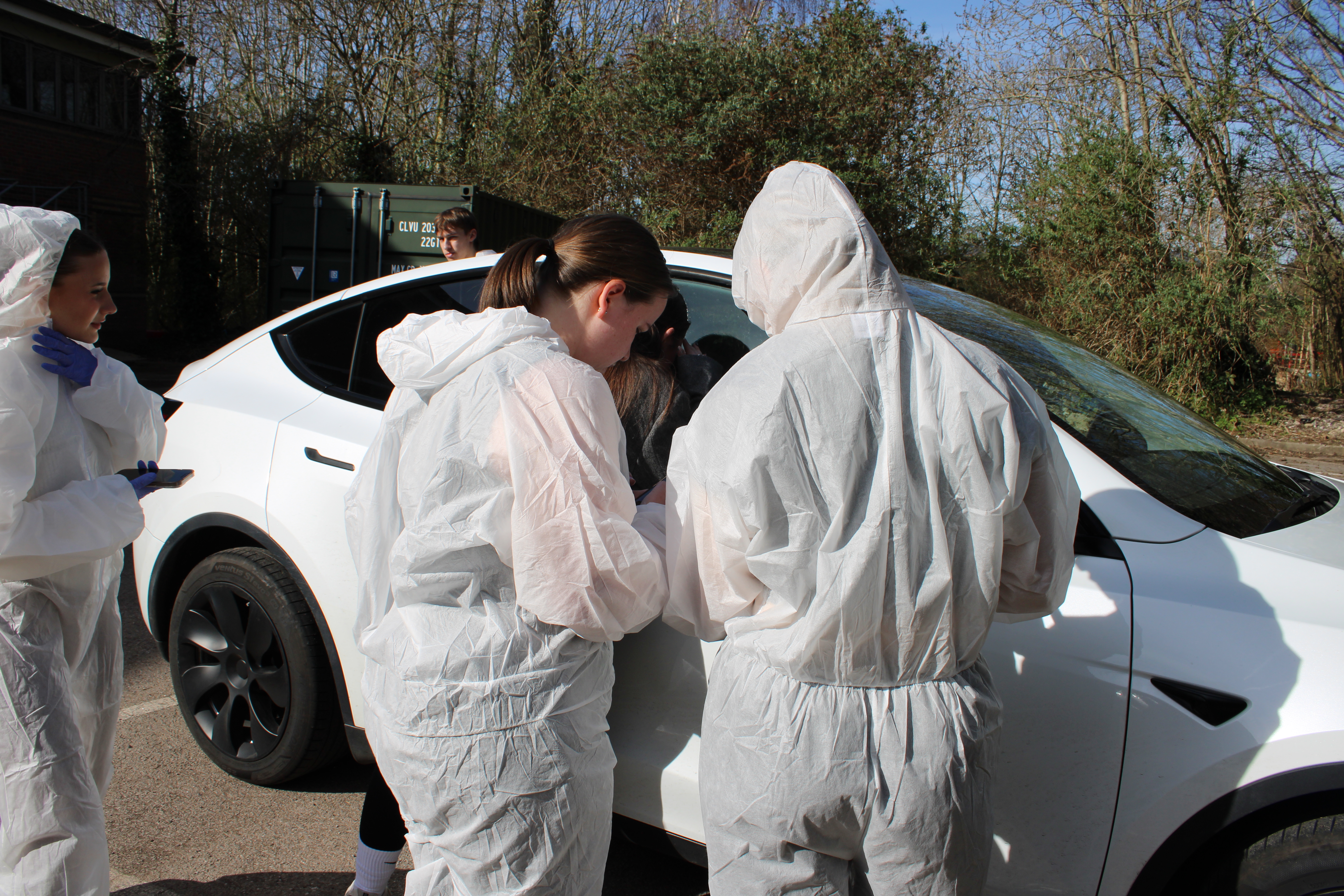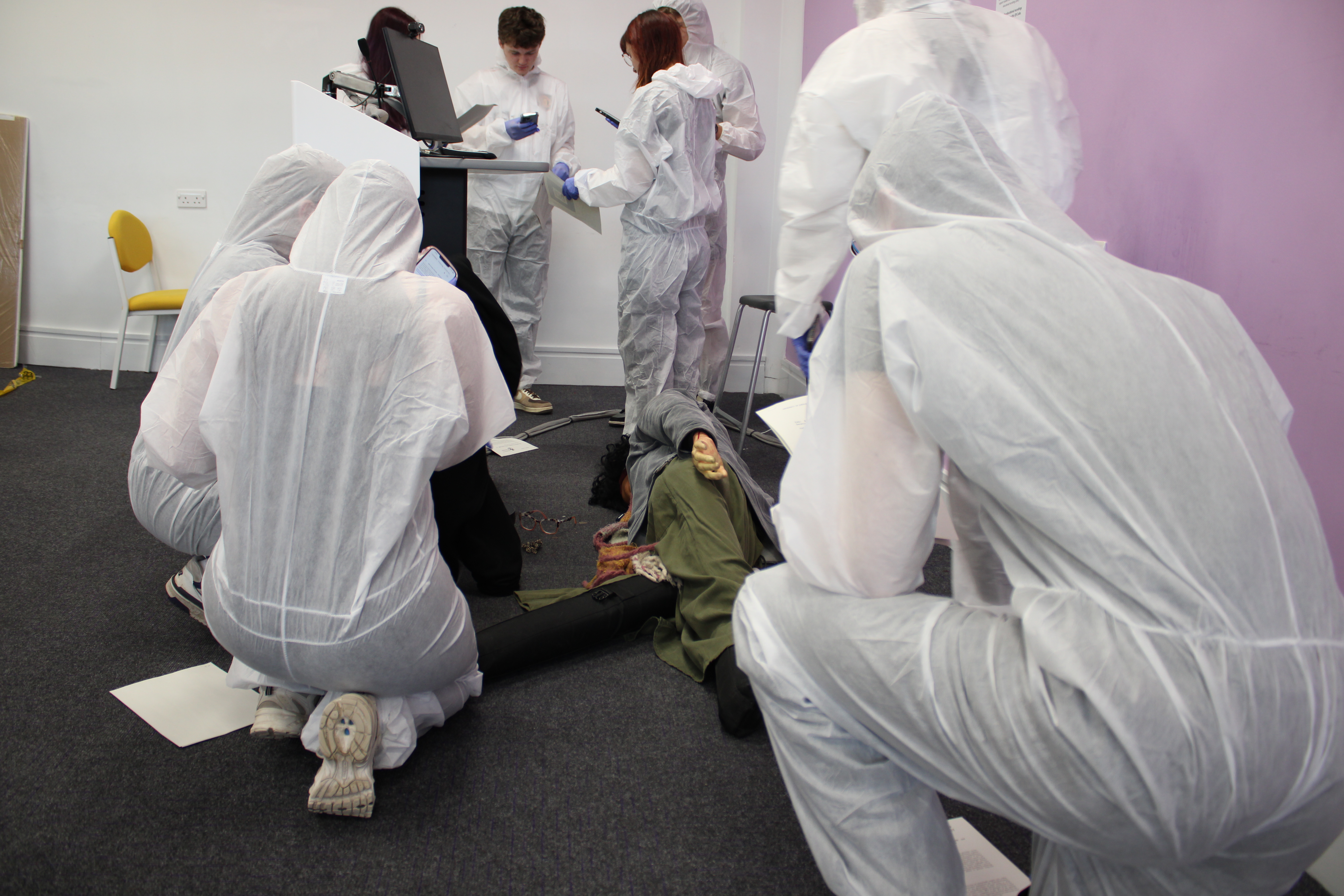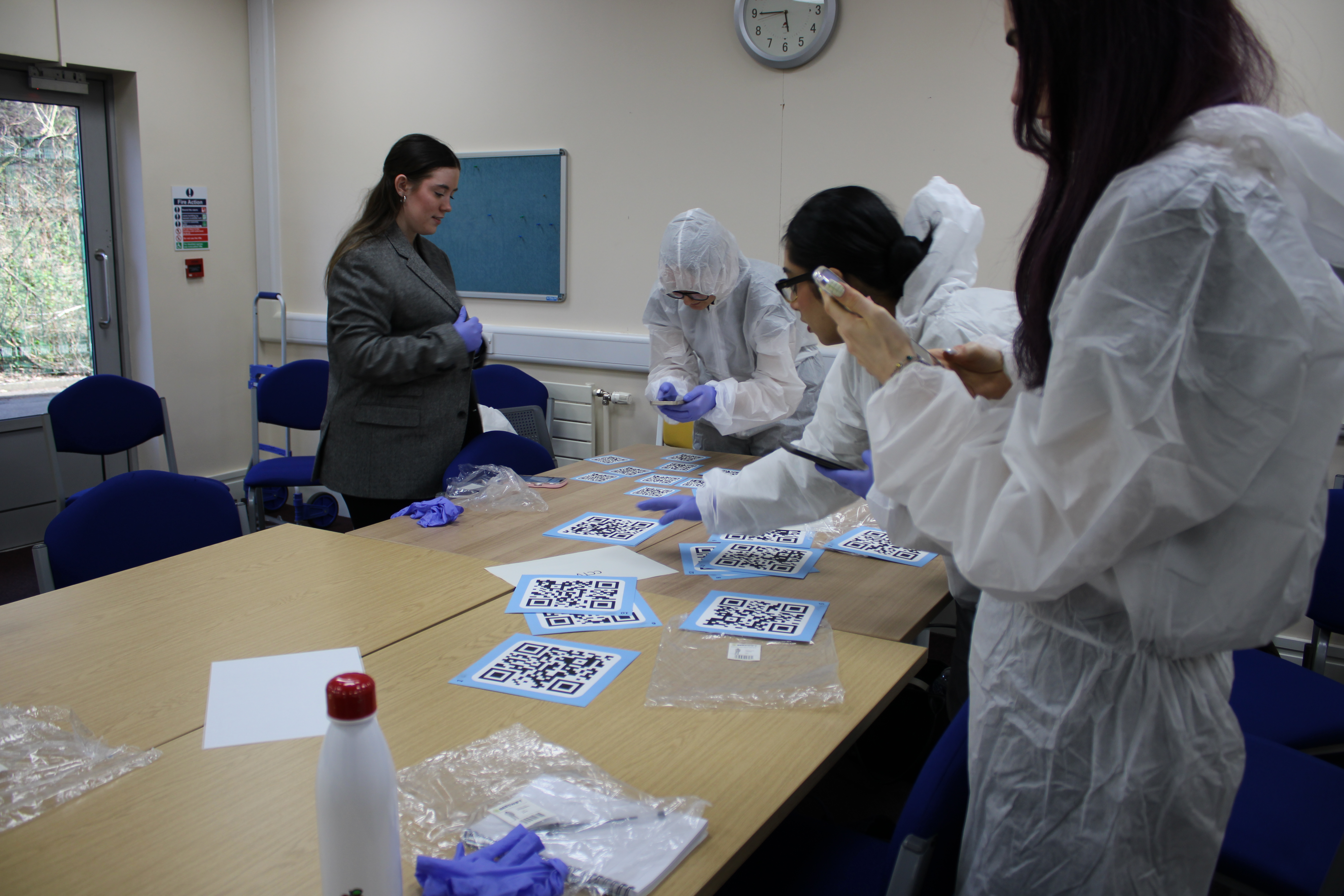Criminology Students Gain Hands-on Experience at Crime Scene Day
Criminology Lecturer, Simone Benhafsi and Senior Learning Technologist, Richard Hind, discuss how they brought learning to life in an immersive Crime Scene day, student Poppy shares her thoughts on why it was a great experience.

Simone Benhafsi, Lecturer in Criminology
What was the crime scene day?
“The crime scene day was a session we ran as part of our undergraduate Criminology degree and was designed to give students a real-world experience of being part of a contemporary police major crime investigation. The day was designed to get our students to put theory into practice and really used what they had learnt from lectures and seminars in this mock investigation. It involved a fake murder, including a (fake) body, which we managed to borrow from our policing counterparts at the University. The students worked together to solve the murder, by identifying and considering the forensic evidence, both digital and physical, questioning suspects, and working together throughout the different stages of an investigation. Major crime investigations are chaotic and dynamic, and we really wanted the session to replicate this. They had assigned roles as Crime Scene Investigators, Detectives, and Senior Investigating Officers and worked as a team to solve the murder. They were also in costume which added to the experience!”

How did you come up with the idea?
“I've worked with the police extensively during my 22 years in criminal justice and the charity sector, and also through my PhD where I followed a major crime police team for a year from the crime scene to the courtroom. I utilised my knowledge to recreate a realistic contemporary crime scene for our Criminology students to experience before they go on to potentially pursue careers in this field once they graduate. When creating this activity, I knew that I needed to fully build a story to then break into parts for the students to solve. There’s a great team of staff members who volunteered to be suspects for the students to interview and I included evidence like blood splatters, a mobile phone, and CCTV footage at the scene. I worked closely with Rich Hind, Senior Learning Technologist, on the digital element of the learning to create what I term ‘magical wizardry’. He created QR codes that led to clues and information about evidence types which were left around the crime scene. This hybrid element worked really well!”
What did students gain from it?
“The feedback from students has been great, they're really keen to do more of this type of activity. I was blown away by their enthusiasm and how they worked together as a group. Great real-world experience and an opportunity for them to lead the session and work together!”
How do experiences like this fit into the rest of the course?
“This type of activity allows for course material to be brought to life for students. It is very interactive with students and lecturers working together, we're already looking at how we can adapt this activity and also run it in the future.”
Richard Hind, Senior Learning Technologist
What were the technological components to this day?
“The Augmented Reality (AR) Crime Scene was created using the AR Scavenger Hunt plugin in H5P which allowed us to print AR Tags that, when scanned, takes the user (the students in this case) to clues that took the form of simple text or video for example. Each of the eight AR Tags acted as a piece of evidence, and three separate AR Scavenger Hunts were created for the three job roles:
- Detective
- Crime Scene Investigator
- and Senior Investigative Officer.
The students were randomly sorted into these roles which meant that if we had one tag next to a piece of evidence, they would get different information, questions, and data depending on its relevance to their job role. This “One Tag/Three Responses” approach allowed us to provide role-specific information and questions for each of them to examine. Providing different evidence to different job roles encouraged students to work together, like they would on an actual crime scene, and understand their job roles and the hierarchy within the crime scene personnel.”

Poppy, Criminology Student
What did you think of the crime scene day?
“I really enjoyed the crime scene day, as we got an insight into how an investigation is run from start to finish.”
Did you learn anything new?
“I learned how the different roles interact throughout an investigation with the collaboration of detectives and senior investigators. I also learnt how officers may make a decision of whether there is enough evidence to charge a suspect.”
What did you like the most?
“My favourite part was when we interviewed the suspect as it was really fun to think on my feet of what questions we should ask. It showed me how difficult it can be to get the information we needed without compromising the investigation.”
Experience real-world learning and discover how you can get involved in Criminology at the University of Chester by visiting our course page.